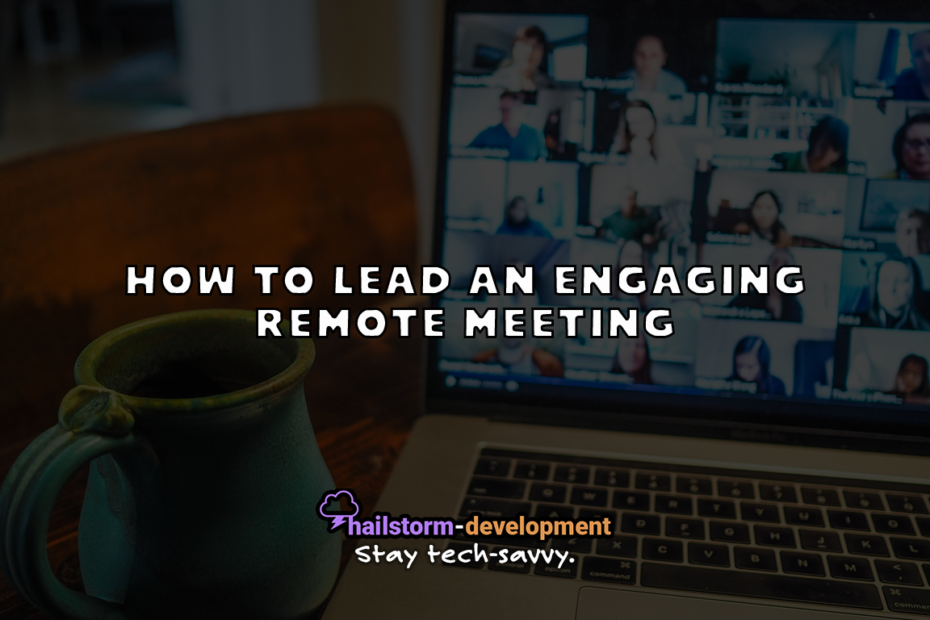How to Lead an Engaging Remote Meeting
While leading a remote meeting may not be rocket science, it can definitely prove both difficult and trying when you’re attempting to record, present, and keep everyone’s eyes on you. That being said, the world isn’t exactly new to remote meetings. In fact, remote meetings have been going on for a lot longer than you’d probably guess – since the 1870s. So, without further ado, let’s get into these tips to lead an engaging remote meeting.
A Brief History of Remote Meetings
Video call concepts
The concept of transmitting an image alongside audio over wire is born (Encyclopedia Britannica)
1870sThe term "video" is coined
Before this, there was not a single term like "video phone," so people used phrases like, "sight-sound television system" and "visual radio"
1935AOL Instant Messenger launches
When it launched, AIM was commonplace on personal computers
May 1997Can you hear me now?
Lifesize makes the world's first HD video conferencing call
November 2004Slack introduces group video calls
In December, Slack introduced group video calls that allow up to 15 people at a time.
December 2016Zoom goes public
Video conferencing company Zoom files for IPO
April 2019Tips to Lead a Remote Meeting
While you can’t control everything, it is good to have a framework in place or an agenda to refer to. Here are some of our top tips for you to lead a successful remote meeting.
1. Prepare your workstation for success
Before your meeting starts, check what’s around you. Do you have everything you need, like pencil and paper, some water, and maybe a timer? Whatever it may be, be sure to grab it ahead of time and ensure it’s closeby so you don’t have to go hunting while your meeting attendees are waiting.
2. Make a backup plan
If you were planning on screensharing, recording, sharing video, and taking notes at the same time, you might want to reconsider. While it may work out in a practice run, you want to be sure you’re “safe” in terms of your efficiency and effectiveness.
3. Create the agenda and share it in advance
Next, create an agenda for your meeting and send it out to participants in advance. That way, attendees can utilize the time prior to come up with any questions they may have.
4. Invite the right people (and introduce them)
Though you may want to include the whole project team, sometimes a smaller, focused group is more efficient. Also, once the meeting starts, having everyone introduce themselves is recommended.
5. Ask participants to contribute
So, we covered what to do before the meeting…but what about during? As one can imagine, there are various methods to involving your participants. For instance, you can select someone to read a slide or instructions for an activity.
6. Send a follow-up
When the meeting is over, it’s important to send a follow-up email to those that attended. Why? You can provide notes from the meeting as well as action items and who they’re assigned to.
7. Keep an eye on action items
Similar to #6, be sure to keep an eye on action items. Sometimes, you may find they may be better suited assigned to a different person.
In Conclusion
The evolution of video, conference calls, and meetings have changed a lot since the early days. Ensuring that your video call is successful, however, is a whole different ball game. With some of these tips, you can lead an engaging remote meeting soon – perhaps even during this workweek! Do you remember when your first remote meeting was? Were you in charge? Let us know in the comments below!
Resources & Further Reading
Rogelberg, S. G. (2020, May 21). The surprising science behind successful remote meetings. MIT Sloan Management Review. Retrieved September 26, 2021, from https://sloanreview.mit.edu/article/the-surprising-science-behind-successful-remote-meetings/.
Wolfe, E. (2021, March 5). The history of video conferencing from 1870 to today. Lifesize. Retrieved September 26, 2021, from https://www.lifesize.com/en/blog/history-of-video-conferencing/.
16 secrets of engaging remote meetings. MiroBlog | A blog by Miro. (2020, July 10). Retrieved September 19, 2021, from https://miro.com/blog/engaging-remote-meetings/.
Recent Posts
The Success Series: How to Leverage Storytelling in Interviews
Learn how to categorize your work and personal experience so...
Read MoreGreat Tech Deals for Amazon Prime Day 2024
Great Tech Deals – Amazon Prime Day 2024 This post...
Read MoreQuick Guide to Google Search
What’s New in Google Search? If you own a business,...
Read MoreMicrosoft Edge’s New RAM Slider
What the RAM Slider Will Do Twitter (now X) user...
Read More



